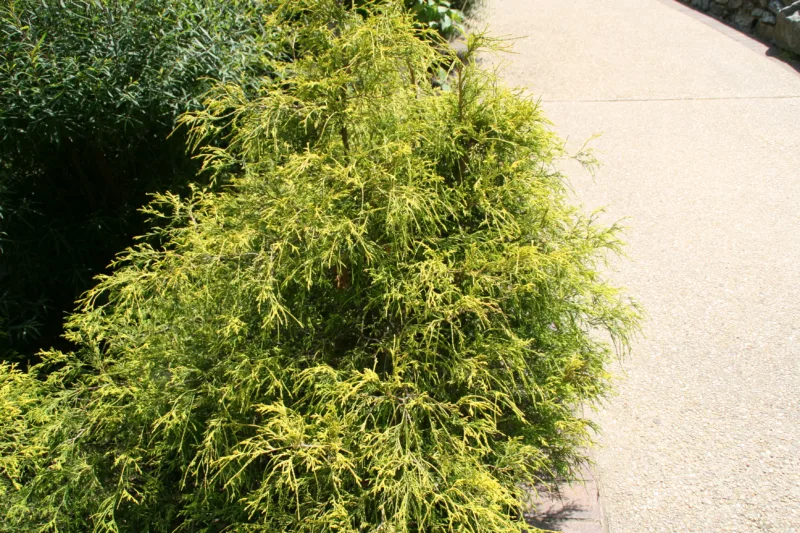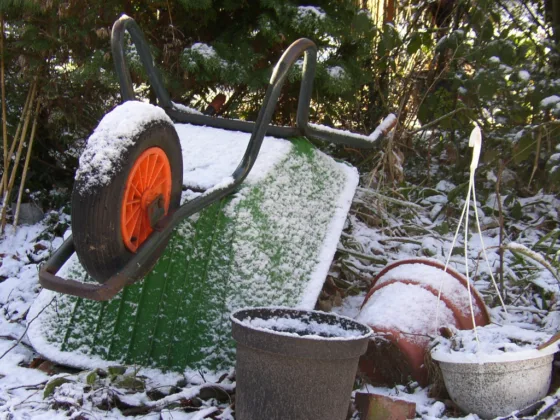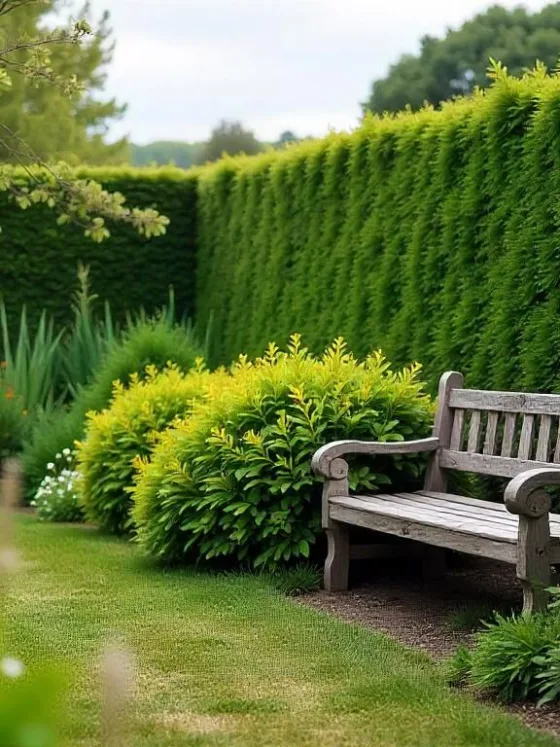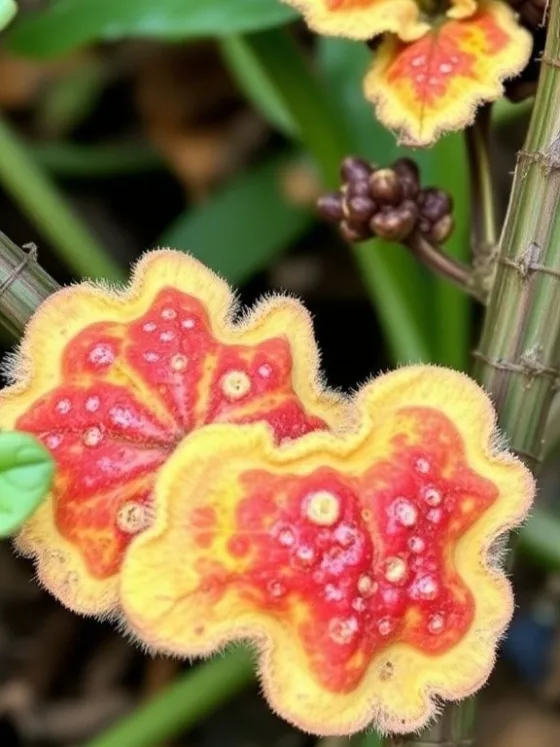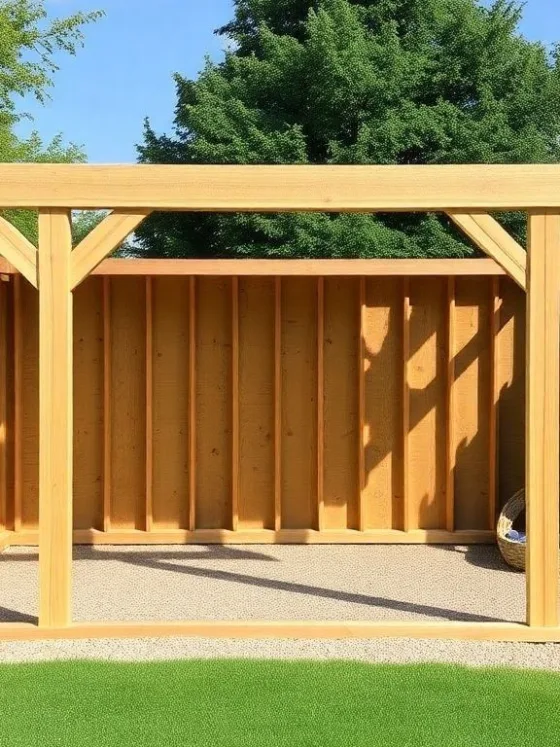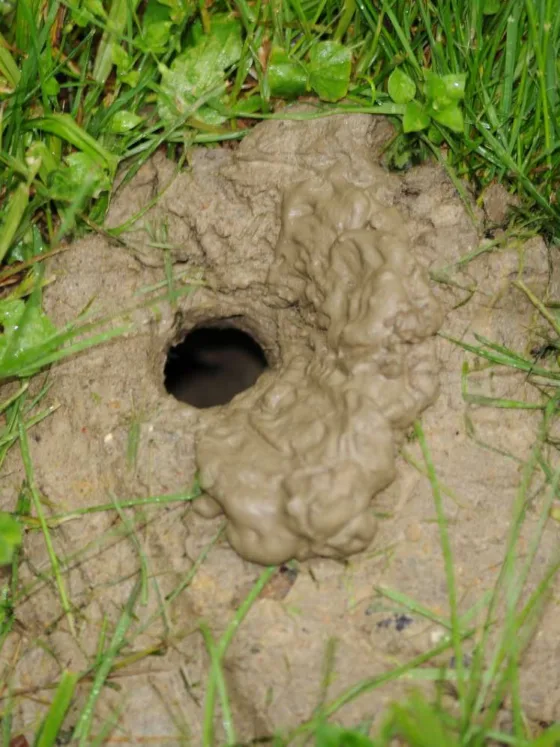Evergreens are plants that people seem to either love or hate.
Usually, the hate stems from a series of failures to get them to survive through their first winter.
Others come to resent the reality that the term ‘evergreen’ is actually a misnomer of sorts.
The truth is, these fine plants actually do lose their needles, but usually throughout the year, so it is not as noticeable.
Sometimes, however, a harsh winter will see a plant defoliate itself completely, and for a good two to three weeks in the spring, the evergreen is no longer ‘evergreen’. This is especially true with pines (Pinus spp.).
All too often a tree that did not receive enough water at the end of the season will shed its needles in spring. Attempting to alleviate the problem by fertilizing in spring is futile, as the damage was done long in the past.
The message is that it is extremely important to take proper care of your investment, even when it appears that the growing season is over.
From a landscape design perspective, evergreens are usually selected for their beauty all winter long.
With the plethora of genera out there, one can create a wonderful winter landscape by mixing colors, whether yellows, blue, or greens, or by combining various shades of greens.
Too often, landscapes are planted with the intent to create a dramatic effect by planting all of one species of evergreen. However, as in the case of Colorado blue spruce (Picea pungens ‘Glauca’), too many of good things can become bad.
When one looks at a row of blue spruce in the winter all they will see is grey. This is not the effect you will want in the dead of winter when everything else is a shade of grey or white.
However, a strategically placed Colorado blue in a mass of green Colorado spruce (Picea pungens), or better yet a mass of white spruce (Picea glauca) or balsam fir (Abies balsamea) will give an even greater effect.
Even mixing textures, by using spruce, pines, firs, and larch (Larix spp.), will create drama without a great deal of effort.
Many people who do not live on a large acreage or have a very large yard will have to keep the scale of the property by using smaller evergreen species.
The most common are arborvitae or white cedar (Thuja spp.) and junipers or red cedars (Juniperus spp.). One cultivar of note is the columnar form of juniper known as the Moonglow juniper (Juniperus scopulorum ‘Moonglow’).
It is particularly impressive since it retains its blue tone more strongly throughout the winter than other varieties.
Most blue juniper cultivars tend to turn anywhere from gray to copper or plum in the winter. Moonglow is also quite hardy and has been used creatively in formal gardens, partly for its verticality, partly for its strong blue color, but more so because the deer seem to ignore it.
Traditionally, the columnar form of arborvitae (Thuja occidentalis) has been used, but where deer are present, they become a midwinter buffet for creatures.
Read Also :
- Using Hostas In Landscape Applications Meet The New Elite Designer Plant
- The Active Winter Gardener: a Time for Planning Ahead
- Preparing and Maintaining a Lawn for Winter
In the urban environment, upright cedars, whether of the red or white cedar variety, are quite practical for giving verticality and a splash of green, blue, or even yellow in the winter landscape.
To further attract the eye, many growers are training upright evergreens into playful specimens, by trimming and clipping them into spirals, globes, and a variety of such shapes.
These topiaries can add an even greater spectacle when used as focal points in the yard. Remember, too many can be annoying. One strategically placed and well-trimmed plant is all it takes to create an air of awe in the yard.
It is important, however, to note that vertical evergreens need to be protected from the southwest in the winter.
A combination of winds and the reflection of the sun off the snow can desiccate your investment, rendering it a crispy brown come spring.
It is therefore important to water your evergreens well up until frost, to ensure that there is an ample supply of moisture at the roots.
In zones 4 and 5 and in microclimates in zone 3, the palette becomes even more diverse.
There are hemlock (Tsuga canadensis) and the deciduous conifer dawn redwood (Metasequoia glyptostroboides), which can be majestic and striking trees in the winterscape.
Chicago has, in the Oak Park area, used dawn redwood as a boulevard tree. These are truly a statement in themselves with the virtually, straight and vertical trunks that can get to be 150 feet tall quite quickly.
Some more residential scale plants include false cypress (Chamaecyparis spp.), yews (Taxus spp.), dwarf firs, pines, and spruces, as well as the broadleaf evergreens; rhododendron and azalea (Rhododendron spp.) and Oregon grape holly (Mahonia aquifolium), where they are hardy.
Remember, each plant has its own charm and character.
Used appropriately, in mass or as specimens, they can provide an interesting relief from winter’s whiteness and add color to a dramatic and appealing landscape.



